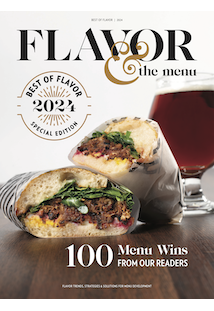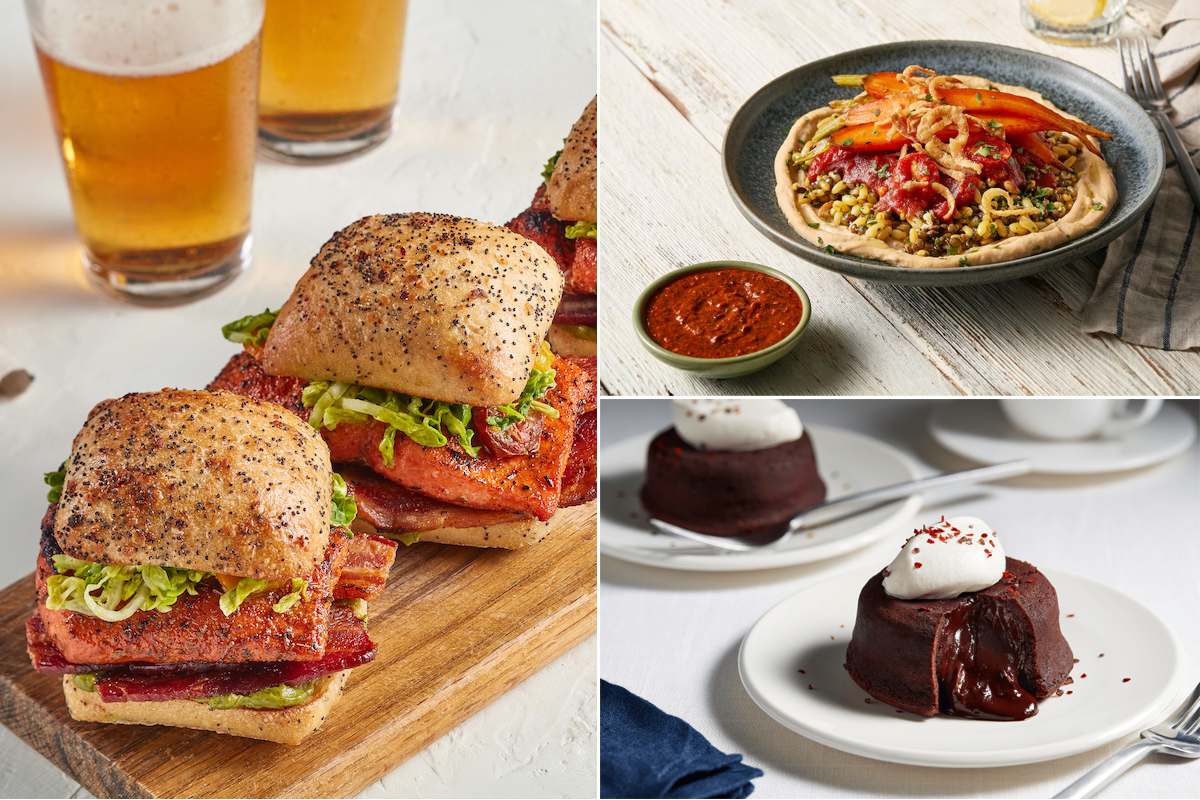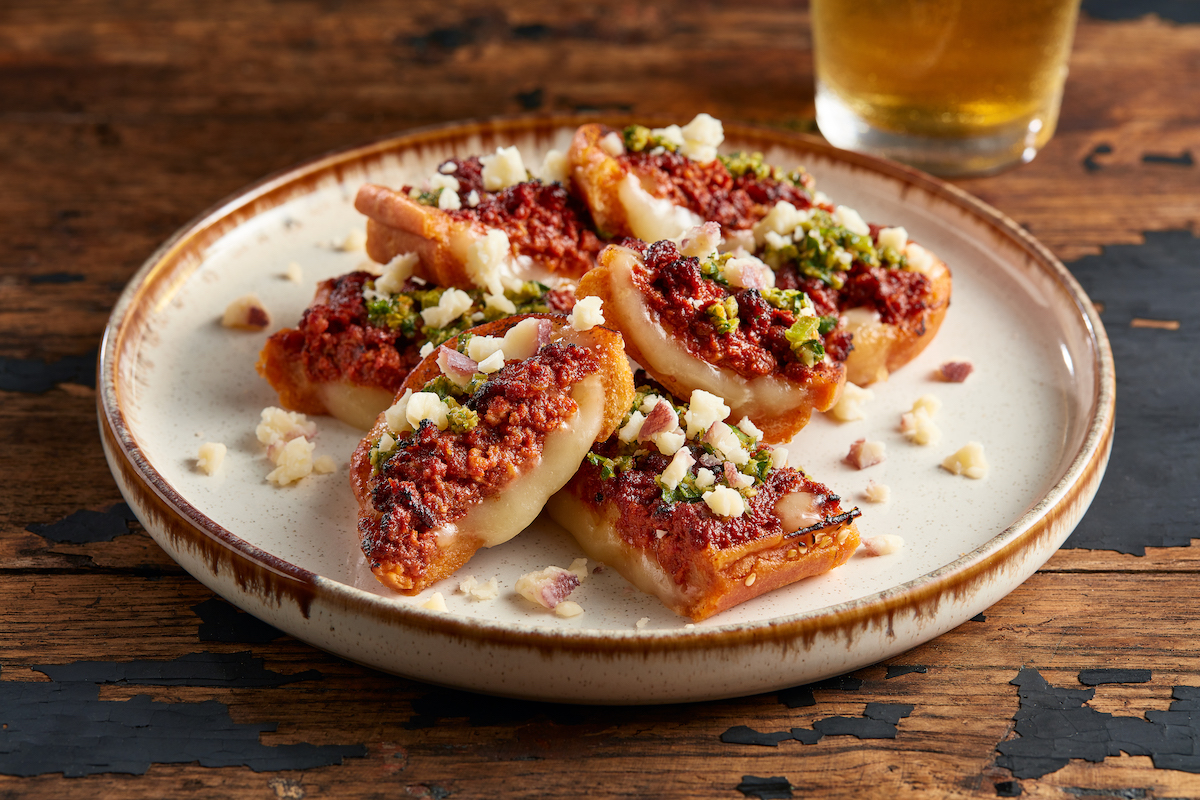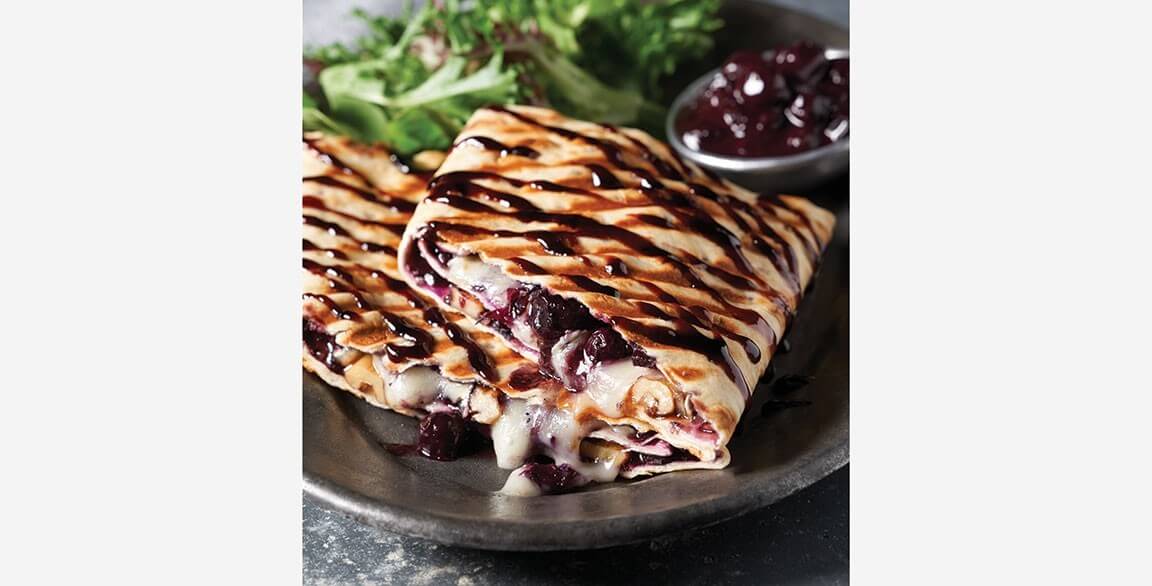

Chefs should take a closer look at frozen blueberries. Individually Quick Frozen (IQF) blueberries deliver high quality fruit with built-in cost savings, supply-chain reliability and a long shelf life. “Because they are available year round, having a consistent, high-quality source of blueberries can help stabilize food costs and menu planning,” says Rosalyn Darling, Associate Culinary Director at Sterling-Rice Group, on behalf of the U.S. Highbush Blueberry Council. “IQF products can also address the massive labor crunch happening right now—they’re easy to store and easy to use, requiring little skilled labor.”
In addition to helping solve back-of-house challenges, frozen blueberries can give menu items a sharper edge. IQF blueberries tend to break down more easily than fresh ones when cooked. The naturally occurring pectin helps thicken sauces. Darling points out that the frost on a frozen blueberry can add to plate presentation. “As IQF blueberries start to thaw, they form a delicate white frost over each berry,” she says. “That can become a beautiful garnish for parfaits, smoothie bowls and frozen desserts.”
ASK A GROWER:
How does the flavor of frozen compare to fresh?
“Blueberries are not just a fresh-market item. Our frozen blueberries are very flavorful. In fact, freezing blueberries does not take away from their flavor, but actually benefits it. They are picked at their peak of ripeness—when the fruit is at its tastiest.”
Jeff Malensky Third-generation grower, packer and processor in the Pacific Northwest
6 Winning WAYS WITH SAVORY BLUEBERRY COMPOTE USING FROZEN BLUEBERRIES
Chefs can maximize this high-impact ingredient, moving the savory blueberry compote into builds beyond brunch fare. By doing so, they’re boosting both flavor and nutrition. Building the compote is simple: frozen blueberries simmered in butter, onions, garlic, rosemary, balsamic vinegar and honey. Here are six ideas on how to optimize savory compote on the menu:
- Add to cooked grains like quinoa and couscous
- Incorporate into chicken or pasta salad
- Layer into a white cheddar grilled cheese sandwich
- Include as an accoutrement in charcuterie platters and cheese boards
- Use as an elegant topper on roasted meats, hummus, baked Brie, fondue or butterflied burrata
- Serve as a condiment with a fried chicken sandwich
TOP OF THE CLASS
 James Benson, Director of Culinary Excellence of Yale Hospitality at Yale University in New Haven, Conn., employs a savvy approach to recipe development, understanding how Gen Z looks for both nutritive functionality and craveable flavor in its menu picks.
James Benson, Director of Culinary Excellence of Yale Hospitality at Yale University in New Haven, Conn., employs a savvy approach to recipe development, understanding how Gen Z looks for both nutritive functionality and craveable flavor in its menu picks.
Blueberries provide a valuable assist. “We currently menu IQF blueberries in several sweet and savory applications,” he says. “We feature them daily in their natural state on our yogurt parfait bar, giving our students access to these high-fiber treasures to serve over Vermont Greek-style yogurt and topped with housemade granola. Our pastry chef incorporates them into blueberry-ginger scones, blueberry and lavender-honey-lemon cake, almond-blueberry frangipane and blueberry-rosemary oat bars. And our chefs are using the frozen blueberries in one of our newest brunch favorites—buckwheat pancakes topped with blueberry-thyme compote. We also love them in all types of salads and vinaigrettes and served over roasted vegetables.”
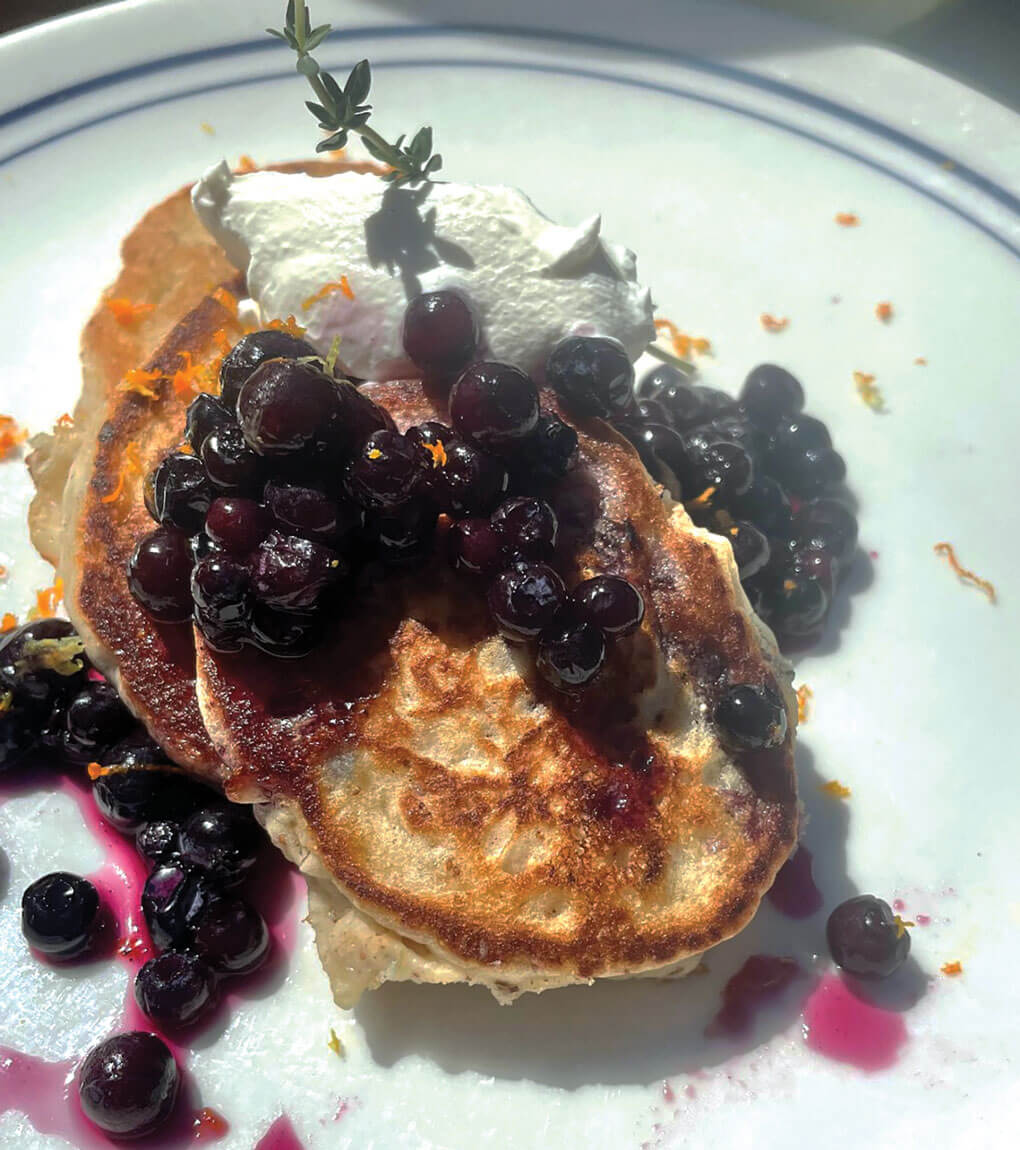
One of the newest additions to Yale’s brunch lineup, the Blueberry Buckwheat Pancakes are topped with a flavorful blueberry-thyme compote and a dollop of whipped cream.
For cutting-edge blueberry ideas and more information on how to use IQF blueberries, visit www.blueberrycouncil.org/foodservice.

